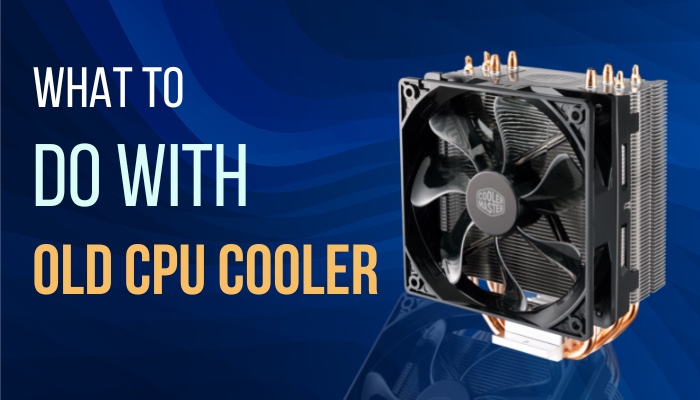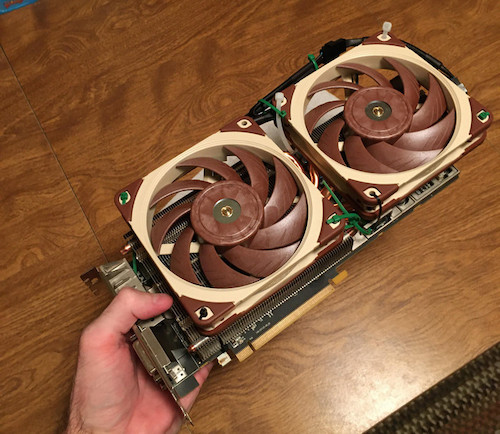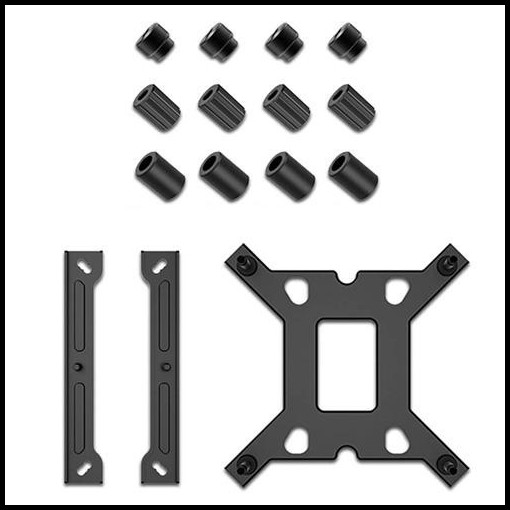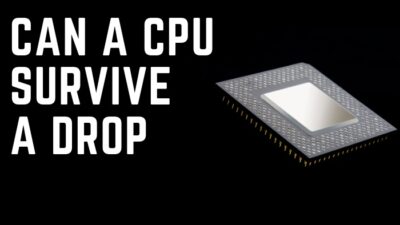Whether you’re upgrading or building a new personal computer or upgrading the CPU cooler, you get yourself a dated cooler.
Don’t know what to do with it? Wondering if you should fling it away already?
Bear with me; I know exactly what you should do with your former processor cooler.
What Can I Do With an Old CPU Cooler?
See, you can make use of your old CPU cooler in different ways, whether it’s an all-in-one liquid cooler (AIO) or an air cooler. Even the lousy stock cooler shipped with your CPU is good enough to serve some purpose.
But before you move on, I want you to be creative. Explore and find ways to achieve diverse utilisations for your good old processor cooler.
Here are some ways you can use the old CPU cooler:
1. Make Mod to Cool Down GPU
In my opinion, one of the best exploitations for the old CPU cooler is to make it compatible with your GPU. But your graphics card already has a cooler installed on it. So, what’s the point?
You know, GPU has a processing core (GPU Die), memory chips (VRAM), power delivery system(Vcore, Vuncore, Vmem, VRM), etc., and they produce a lot of heat. The built-in cooler for an entry-level card is not that efficient in dissipating it.
So, you can install your old CPU cooler directly on the GPU die to reduce heat generation. Buy some additional heat sinks and thermal pads to put on the VRAM.
I made a Frankenstein GPU myself, and the results were phenomenal. My RTX 2070S dropped a whopping 10 degrees of maximum temperature.
Note: GPUs with great pre-installed coolers, such as ASUS ROG Strix, Palit Game Rock, Galax Hall Of Fame, MSI Suprim, Colorful Vulcan etc., cards don’t need such mods.
Similarly, you can cool down the opposite portion of the GPU die on the PCB. Typically, this section is covered with a metal backplate accompanied by thermal pads in between to dissipate heat.
2. Save it As a Backup Cooler
A PC component can fail at any time. CPU coolers are no exception, especially AIOs. The pump may die, or the radiator may get leaked. So, saving the old cooler as a backup is a good idea unless you want to sit idle and think about why life is so cruel. 
The only thing that can go bad in an air cooler is the fan. A spare cooling fan will take a minute or two to get your cooler up and running. However, dropping from a height may damage the aluminum fins and copper heat pipes.
So when you have an extra CPU cooler at your hand, you’re always covered in the most unfortunate cooler incidents, such as the complete shutdown of the system due to excessive heat. But don’t forget to use thermal paste each time you mount a cooler on the CPU.
If things get a little sloppy and you have thermal compound all over the place, make sure you clean it from the CPU pins and motherboard socket properly. Isopropyl alcohol is the safe bet to remove any leftovers from these components.
Remember, without a proper mounting of the CPU cooler your system will not post at all. The worst case scenario is that with increasing temperature, your processor may get fried.
3. Reuse the Old CPU Cooler
Here’s a pro tip— it is not necessary to buy a new cooler each time you upgrade or buy a new CPU. Just slap on the old cooler, and get your system back in action.
Nonetheless, there is one decisive factor to consider; compatibility. The cooler you are about to reuse with the new CPU must support the corresponding socket.
But how do you know whether the former cooler supports a new socket?
The answer is only a few clicks away. Go to the product page of your old cooler and check the supported socket list. If it matches the CPU socket, you are golden!
Let’s say you upgrade from a Ryzen 5 1600 to a Ryzen 7 3700X. Both of the CPUs share the same AM4 socket. So you don’t need to change the motherboard for the new processor.
And guess what? Your existing cooler is perfectly fine for the new CPU.
On the contrary, going from 11th to 12th gen Intel Core CPUs requires a new air or liquid cooler. That’s because the first and latter support LGA 1200 and LGA 1700, respectively.
Note: Typically CPU coolers support multi generation sockets. Simulated scenarios will help you understand an old cooler’s viability.
Even after that, there’s another hack; get a compatible mounting bracket. It’ll allow you to reuse the old cooler on a new processor.
4. Repurpose Your Obsolete Processor Cooler
Assuming you’re unable to reuse the CPU cooler of a vintage computer. But don’t worry, it may have some legacy left; who knows?
Go to the drawing board, get creative and find what you can do with it. For instance, make a high-speed fan or a headphone stand, or use the heatsink to cool down other electronics. Just follow your instinct that works.
5. Sell it Off
One man’s trash is another man’s treasure; you’ve probably heard it, right? So, sell your old cooler online or in the flea market if it does not hold any value for you.
Make sure it works fine and include all add-ons (fan, bracket) so that another person can utilize it for his purpose.
FAQs
How Long Does a CPU Cooler Last?
All-in-One Liquid CPU Cooler(AIO) lasts around 3 years. But air coolers can last way longer than that. Only the fan may fail after 4-5 years.
How Often Should I Change the Water in My CPU Cooler?
Change the coolant or water of your custom water cooling loop every 1-1.5 years. This will ensure the peak cooling capability of the loop.
Can I Reuse an Old AIO?
Yes, you can reuse an Old AIO if it supports the new socket. Buy a compatible bracket if the included one does not support your new CPU’s socket.
Ending Remarks
Throwing away your past CPU cooler is not a smart move. Accessories of electronic devices can benefit you in different ways. Hope this article showed you useful ways to utilize an old processor cooler.
Comment down below and let me know your thoughts.




